The Batu Caves, a stunning blend of natural beauty and spiritual significance, stand as a testament to Malaysia’s rich cultural tapestry. With their impressive limestone formations and the towering statue of Lord Murugan, these sacred caverns invite visitors to experience a unique journey steeped in history and devotion. As they ascend the iconic 272 steps, many find themselves captivated by the vibrant murals and sacred shrines that tell stories of Hindu mythology. Yet, the real magic happens during the Thaipusam festival, where traditions come alive in a way that leaves many wondering about the deeper meanings behind these rituals.
Good To Know
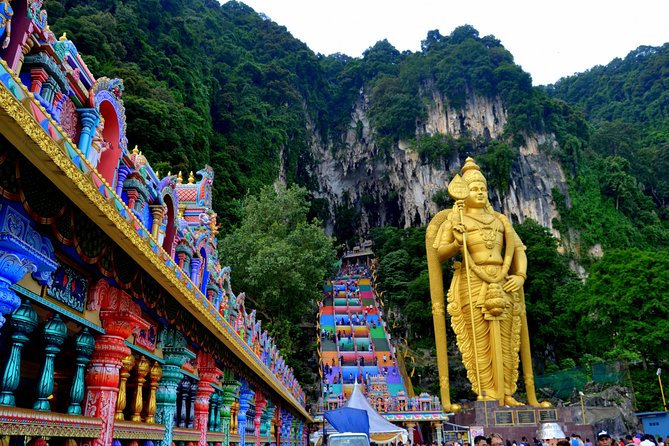
- Batu Caves, over 400 million years old, is a significant Hindu pilgrimage site, especially during the Thaipusam festival.
- The main shrine dedicated to Lord Subramaniam features a remarkable 42.7-meter golden statue.
- Visitors can explore various deities’ shrines, including those of Goddess Durga and Lord Ganesha, showcasing rich Hindu traditions.
- The ascent of 272 steps provides stunning views and opportunities to observe local wildlife.
- A respectful dress code is required, and comfortable shoes are recommended for the climb.
Historical Significance of Batu Caves

Batu Caves, a stunning natural wonder located just outside Kuala Lumpur, holds great historical and cultural significance for Malaysia’s Hindu community.
These limestone caves are believed to be over 400 million years old and have served as a sacred site since the late 19th century. The caves became a focal point for Hindu worship after the hotel of a shrine dedicated to Lord Subramaniam in 1859.
Over the years, Batu Caves has evolved into a vibrant pilgrimage destination, especially during the Thaipusam festival, where thousands gather to celebrate.
The colorful statues and elaborate temples within the caves reflect the rich tapestry of Hindu traditions, making it not just a spiritual haven but also a captivating glimpse into Malaysia’s cultural heritage.
You can also read our reviews of more tours and experiences in Kuala Lumpur.
The Journey to the Caves
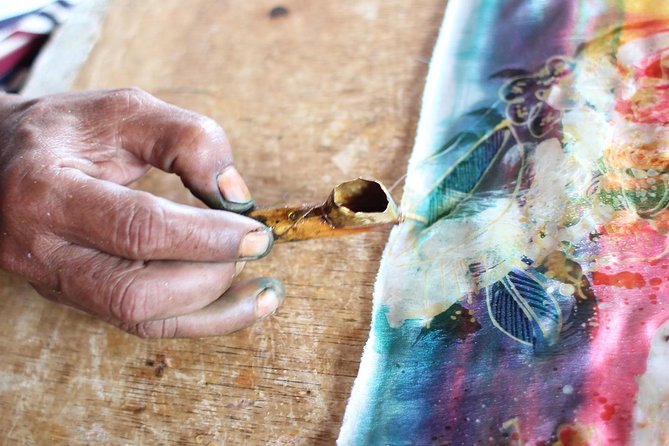
Reaching the Batu Caves is an experience in itself, blending the thrill of adventure with the allure of cultural exploration.
Travelers often start their journey with convenient hotel pickups, whisked away to this iconic site in Kuala Lumpur. As they arrive, the sight of the towering golden statue of Lord Murugan greets them, sparking excitement.
The ascent of 272 steps can be challenging but rewarding, offering stunning views and the chance to witness local wildlife. Along the way, visitors might catch glimpses of vibrant Hindu traditions.
Some may opt for private tours, while others join group excursions, each providing unique insights. Regardless of the choice, the journey to the caves serves as a captivating prelude to the spiritual experience awaiting inside.
Exploring the Hindu Shrines
As visitors step into the Batu Caves, they’re immediately immersed in a vibrant tapestry of Hindu culture and spirituality. The impressive limestone formations house several shrines, each dedicated to various deities, showcasing intricate carvings and colorful statues. Among these, the shrine of Lord Subramaniam stands prominently, drawing worshippers and travelers alike.
| Shrine Name | Deity | Notable Features |
|---|---|---|
| Lord Subramaniam | Lord Murugan | 42.7-meter golden statue |
| Goddess Durga | Goddess of Power | Stunning murals |
| Lord Ganesha | Remover of Obstacles | Vibrant decorations |
| Lord Shiva | God of Destruction | Peaceful ambiance |
Exploring these shrines offers a profound glimpse into Hindu beliefs, making each step a spiritual journey through faith and devotion.
Cultural Traditions at Batu Caves
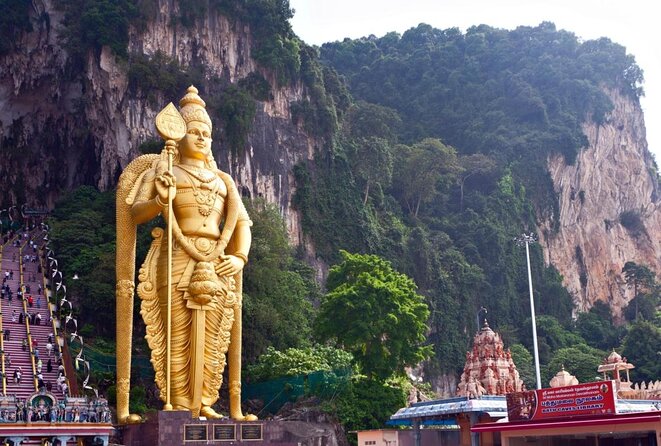
Visitors to the Batu Caves quickly notice the rich tapestry of cultural traditions that infuse the site with life and meaning. The vibrant scenes unfold through the colorful festivals celebrated here, especially Thaipusam, when thousands gather to honor Lord Murugan.
Devotees often engage in intricate rituals, from carrying kavadis to performing penance, showcasing their devotion. The air buzzes with chants and the aromatic scents of offerings like flowers and fruits, deeply rooted in Hindu customs.
Plus, the presence of local artisans selling handmade crafts and traditional clothing reflects Malaysia’s diverse culture. This blend of spirituality and artistic expression not only enriches the visitor experience but also fosters a deeper understanding of the cultural significance of Batu Caves.
Tour Logistics and Experience
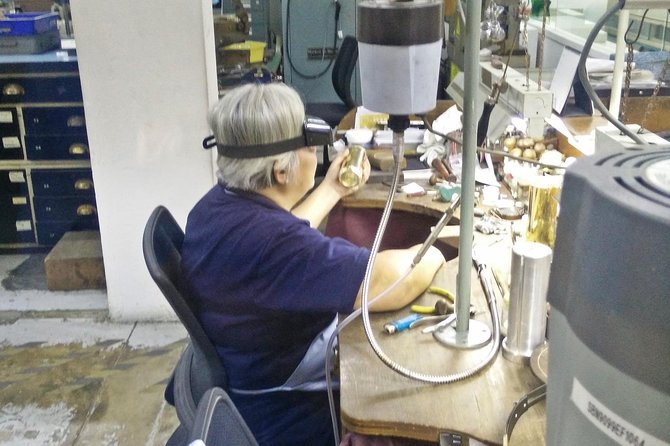
Experiencing Batu Caves goes beyond just the vibrant cultural traditions; it’s also about the logistics that make the visit seamless and enjoyable.
Tourists can opt for private or group (Seat-In-Coach) tours, ensuring flexibility to suit different preferences. Convenient hotel pickup and drop-off services are available for those in Kuala Lumpur, while transfers outside the city may incur extra charges.
Each tour lasts about three hours, allowing ample time to explore the stunning caves and nearby attractions like the Malaysian Batik Cottage and Royal Selangor Pewter Factory. Participants receive booking confirmations, making it easy to plan ahead.
With a bit of preparation, visitors can focus on soaking in the breathtaking beauty and rich history of this iconic destination.
- Glowing Kuala Selangor Firefly Tour
- Authentic Malaysian Cooking Class With Market Tour
- Malacca UNESCO World Heritage Site Day Trip From Kuala Lumpur
- The 10 Tastings of Kuala Lumpur With Locals: Private Street Food Tour
- Putrajaya and River Cruise Tour (Sic Tour) *Child Below 3yrs NOT Allowed*
- Cooler Lumpur by Night
Dress Code and Visitor Guidelines
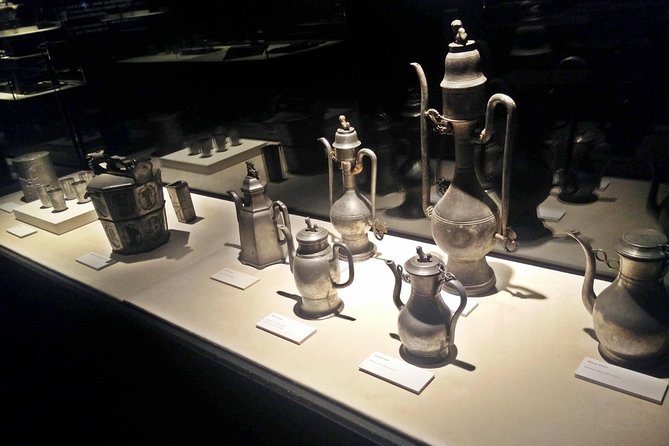
When planning a visit to Batu Caves, it’s essential to keep the dress code in mind to ensure a respectful experience. Visitors should avoid short skirts, shorts, and sleeveless tops, as these aren’t permitted within the sacred site. Instead, it’s best to opt for light, comfortable clothing that covers the shoulders and knees.
While most travelers can participate, it’s important to note that the site isn’t wheelchair accessible, so plan accordingly. Plus, infants must sit on laps during the climb.
To enhance the experience, wearing comfortable shoes is recommended, as visitors will tackle 272 steps. Lastly, don’t forget essentials like sunglasses and sunblock to shield against the tropical sun as you explore this magnificent spiritual destination.
Transportation Options for Tourists
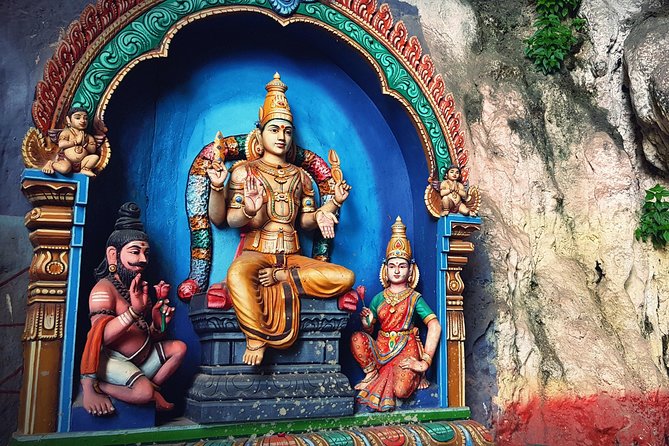
Getting to Batu Caves is straightforward, with several transportation options available for travelers. Many visitors opt for private tours that include hotel pickup and drop-off within the Kuala Lumpur city area. This option offers convenience and a hassle-free experience.
For those outside the city, additional charges may apply for transfers. Public transport is another viable choice; travelers can take a train from Kuala Lumpur to Batu Caves, which provides a scenic and affordable journey.
Alternatively, ride-sharing services are widely used, allowing flexibility in scheduling. Whichever method travelers choose, getting to this stunning site is easy, ensuring they can focus on exploring the incredible caves and temples without transportation worries.
Visitor Reviews and Insights
Visiting Batu Caves often sparks a mix of excitement and curiosity among travelers. Many rave about the breathtaking views after conquering the 272 steps, highlighting the vibrant Hindu culture and stunning shrines.
Tour guides frequently receive praise for their knowledge and ability to enrich the experience. However, some visitors express frustration over time spent in traffic and additional stops, suggesting that it can feel rushed.
While many find the tour worthwhile, a few travelers recommend exploring Batu Caves independently to enjoy a more personalized experience.
Frequently Asked Questions
What Is the Best Time to Visit Batu Caves?
He recommends visiting early morning or late afternoon for cooler temperatures and fewer crowds. Weekdays often provide a quieter experience, allowing visitors to fully appreciate the stunning surroundings and unique cultural insights without distractions.
Are There Dining Options Available Near Batu Caves?
Nearby, visitors can find several dining options, including local Malaysian eateries and cafes. They’ve got a variety of dishes to satisfy different tastes, making it easy for everyone to grab a meal after exploring.
Can I Take Photos Inside the Temples?
Visitors can take photos inside the temples, but they’re encouraged to be respectful of the sacred space. Some areas might have restrictions, so it’s best to check for signs or ask a guide for guidance.
Is There a Fee to Enter Batu Caves?
They don’t charge an entry fee for Batu Caves, making it accessible for everyone. Visitors can explore the stunning caves and temples freely, but donations are appreciated to help maintain the site’s beauty and significance.
Are There Any Festivals Celebrated at Batu Caves?
Visitors often enjoy vibrant festivals at the site, especially Thaipusam, where devotees showcase their devotion with elaborate rituals. These celebrations attract crowds, creating an energetic atmosphere that highlights the rich cultural heritage of the local Hindu community.
The Sum Up
Visiting the Batu Caves is more than just a trip; it’s a journey into a vibrant world of faith and culture. From the awe-inspiring golden statue of Lord Murugan to the intricate shrines and lively festivals, there’s something magical in the air. Whether you’re seeking spiritual enlightenment or simply curious about the rich traditions, Batu Caves promises an unforgettable experience. So, lace up your shoes, embrace the climb, and learn about this stunning cultural landmark!
More Tour Reviews in Kuala Lumpur
- Kuala Lumpur: Malacca Day Trip with River Cruise and Lunch
- Kuala Lumpur: Batu Caves, Ramayana Caves and Kanching Falls
- Kuala Lumpur: Genting Highlands & Batu Caves Day Trip
- Genting Highlands Tour with Cable Car
- Kuala Lumpur: Batu Caves & Genting Private Day Trip
- From Kuala Lumpur: Elephant Sanctuary Guided Tour
Not for you? Here's more nearby things to do in Kuala Lumpur we have reviewed
- Kuala Lumpur: Malacca Day Trip with River Cruise and Lunch
- Kuala Lumpur: Batu Caves, Ramayana Caves and Kanching Falls
- Kuala Lumpur: Genting Highlands & Batu Caves Day Trip
- Genting Highlands Tour with Cable Car
- Kuala Lumpur: Batu Caves & Genting Private Day Trip
- From Kuala Lumpur: Elephant Sanctuary Guided Tour
- Kuala Lumpur: Putrajaya Tour with Pink Mosque & River Cruise
- Kuala Lumpur: Evening Food Tour by Bike
- Kuala Lumpur: Private Half-Day City Tour
- Kuala Lumpur: Private Batu Cave, National Mosque Tour, Lunch
- Exclusive Private Day Trip to Genting Highlands
- Kuala Lumpur: Genting Highlands Day Tour 10 hours
